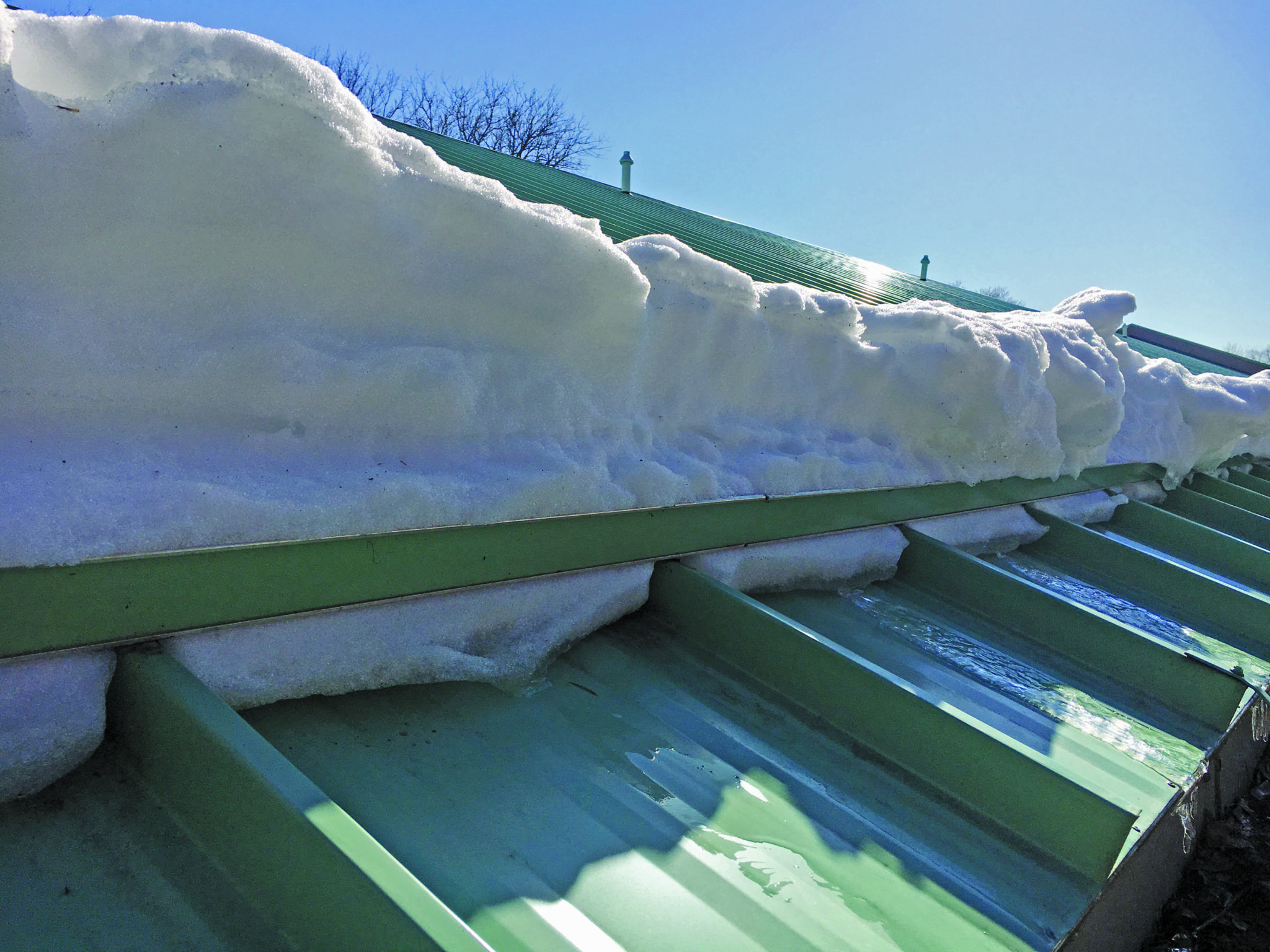Protect your Investment Before Winter
Anyone living in areas prone to below-freezing temperatures are likely familiar with ice dams and the costly damage caused by them. Before winter arrives, it’s important to ensure your building is protected against the dangerous and expensive effects caused by ice dams. There are steps you can take to avoid them from happening.
What Are Ice Dams and where to they form?
Ice dams are typically formed on the ridges of roofs, when heat from inside a home rises to the attic and causes snow that has accumulated on top of the roof to melt. Once the snow begins to melt, it trickles down the slope of a roof, underneath the snow that’s still on top of the roof. It puddles (typically near eaves), and refreezes when it hits below-freezing temperatures due to improper drainage. You’ll notice this when icicles form along the eaves.
This inability for snowmelt or moisture to be properly drained from the roof’s surface, combined with the ice dams formed from refreezing can cause costly damage to homes. Damage can include the structure itself, the gutters, leaking, and more. The most common reasons that ice dams form are inadequate roof insulation, heat leaks, and/or inadequate ventilation. The freeze-thaw cycle causing the dams develops as an area experiences a (relatively speaking) warm, sunny day followed by freezing cold nights through the winter season.
How to Prevent Ice Damming
Preventing ice dams on your home’s roof can help you save time, money, and potential damage to your property. The basic way to ensure you’re protecting your home’s roof against ice dams is to keep your attic space air temperature as close to the outdoor temperature as possible. You can use a few different methods to achieve this.
Seal Any Air Leaks – Finding and sealing up any small air leaks that allow warm air from inside your home to reach your attic space is a great first step to preventing ice damming. Even the smallest holes or pathways that let warm air escape need to be properly sealed. After you’ve located any leaks, simply seal them up with spray foam or weather stripping to keep warm air out of your attic.
Adequate Insulation – It is crucial to have enough insulation that prevents your attic space from becoming too warm, and results in ice dams on your roof. Make sure your attic has sufficient insulation based on your geographic location’s building codes. Many older homes and structures do not have enough insulation to control the attic air temperature.
Proper Ventilation – Ensure your attic has proper ventilation. Simply improving your home’s ventilation system will not solve ice damming issues alone (you must seal air leaks and add more to resolve the issue). The best places to check for proper ventilation is in your home’s soffit and ridge vents. Soffit especially is designed to drive cold air to the inside of your attic space. Make sure your home has these vents in order to keep your attic space cool. If you’re not sure, it’s best to contact a roofing expert in your area, as they can give you a ventilation analysis based on cubic footage and where the vents are located for your roof.
If you’re thinking about installing a new roof and are concerned about ice dams, metal roofing is a superior choice for cold-weather, high snow volume environments. The being that metal roofing is slick, it will help snow slide right off your roof. With adequate pitch and minimal amounts of valleys, the chances of ice damming reduces greatly.
Snow Guards
The biggest concern with metal roofing and snow is “roof avalanches,” which is when snow and ice is suddenly released from your roof all at once. However, this concern can very easily be addressed and corrected by using snow guard systems. You can read more about snow guards and why metal roofs need them here. For more tips on preventing ice dams, read suggestions from the Metal Roofing Alliance here.
If you’re interested in learning more about standing seam roofing, check out our website at AllAmericanSteel.net, or contact us any time through our website’s contact page.


